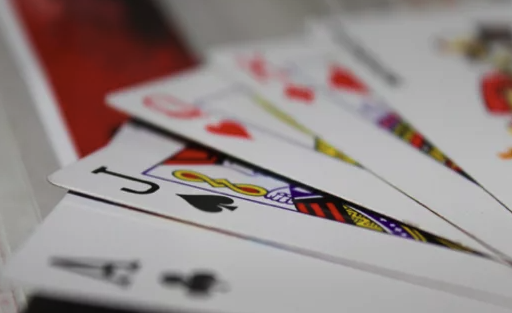Glossary Term
Side Pots
Side Pots
Used In: Poker
Introduction
In poker, most hands involve one pot that all players contribute to and try to win. But when a player goes all-in with fewer chips than others, and betting continues, the game creates one or more side pots. These separate pots help organize the betting so each player competes only for the amount they put in, or are eligible to win.
Side pots come up most often in no-limit or pot-limit games, especially in tournament play where short stacks are common. Once a player is all-in, they can't win more than what they matched. Any extra bets by the remaining players go into a side pot, which only they can win. If more players go all-in with different amounts, the hand can split into a main pot and multiple side pots.
This rule keeps the game fair. Without side pots, players with fewer chips could unfairly win more than they risked, or stronger hands might fold to avoid confusing bets. Understanding side pots helps you read the board better, make smarter bets, and track who’s eligible to win what.
In Depth Look
Side pots exist to keep poker fair when players have different chip stacks. In a standard hand, everyone can bet freely, and the winner takes the whole pot. But when one or more players go all-in, they can’t bet more than they have. If others still have chips and keep betting, those extra chips need to be handled separately. That’s where side pots come in—they hold the bets that the all-in player is not part of. This way, players only compete for the pots they’re actually eligible to win.
Let’s say three players are in a hand. Player A goes all-in for 100 chips. Player B calls the 100 and adds another 100. Player C calls the full 200. In this case, the main pot holds 300 chips (100 from each player), which all three can win. A side pot of 200 chips is created (100 each from Players B and C). Since Player A didn't match those extra bets, they can't win the side pot. At showdown, the best hand among B and C wins the side pot, while the best hand among all three wins the main pot.
Side pots can get even more complex if multiple players go all-in for different amounts. In that case, multiple side pots may be needed, each representing a different level of matched bets. The dealer must track these carefully, and players must stay aware of which pots they’re eligible for. While it may seem complicated at first, the system ensures fair play and proper payouts based on risk. Once understood, side pots become an essential part of poker strategy—especially in tournament situations with uneven stacks.
Mechanics
When a player goes all-in with fewer chips than others, the hand continues, but extra bets must be separated. The original pot—the main pot—includes the all-in player's matched amount from each opponent. Any further bets after that go into a side pot, which only involves players who still have chips and continue betting. If more players go all-in for different amounts, additional side pots are created, each with its own eligible group of players.
At showdown, the dealer resolves the pots in order. The main pot is awarded first, going to the best hand among all remaining players, including the all-in. Each side pot is then resolved in the order it was created, and only includes players who contributed to it. This setup ensures players can only win what they’ve put in or matched.
- The main pot includes the smallest shared bet that all players matched.
- Side pots are only contested by players who bet beyond the all-in amount.
- Pots are awarded in order: main pot first, then each side pot.


Illustrated Example
Imagine a hand with three players: Anna, Ben, and Carla. Anna has 50 chips, Ben has 100, and Carla has 200. Anna goes all-in for 50. Ben calls the 50 and raises another 50, putting in a total of 100. Carla calls the full 100. At this point, the main pot contains 150 chips—50 from each player. Since Anna is all-in, she can't add more. The side pot contains 100 chips—50 from Ben and 50 from Carla. Anna is not eligible to win this side pot.
At showdown, all three reveal their cards. If Anna has the best hand overall, she wins the 150-chip main pot but doesn’t touch the side pot. The side pot is then awarded to the better hand between Ben and Carla. If Carla has the best hand among them, she wins the 100-chip side pot. If Ben beats both Anna and Carla, he wins both the main pot and the side pot. Each pot is resolved separately based on who’s still active in each one.
Player Perspective
side pots add a layer of strategy and awareness. You need to know which pots you’re eligible to win and how much you’re risking. If you’re the short stack going all-in, you focus only on the main pot—you can’t win more than what you matched. But if you have more chips, you must decide whether to bet into a side pot, knowing it could end up being contested between just you and another player. Reading the other players’ actions becomes even more important in these moments.
Side pots also affect bluffing, betting pressure, and fold decisions. A large side pot might encourage strong players to fight over it, even if the main pot includes an all-in with a weak hand. Meanwhile, players not involved in the side pot should avoid trying to influence its outcome. Misunderstanding who can win which pot often leads to mistakes at the table, especially in fast-paced tournament settings. Keeping track of chip counts and bet amounts helps prevent confusion and gives you an edge.
| Player | Chips Committed | Pot Eligibility |
|---|---|---|
| Anna | 50 | Main Pot Only |
| Ben | 100 | Main Pot + Side Pot |
| Carla | 100 | Main Pot + Side Pot |
Conclusion
Side pots are a key part of poker that keep the game fair when players go all-in with different chip stacks. They make sure each player only risks—and can win—what they’ve put in. While side pots can seem complex at first, understanding how they work helps you stay focused and make better decisions at the table. Whether you’re managing your stack or reading your opponents, knowing who’s eligible for which pot gives you a clear edge in play.
The Top Online Casinos for Playing Poker
These platforms prioritize player satisfaction by providing intuitive interfaces, seamless gameplay experiences, and robust security measures to ensure a fair and enjoyable environment for all users.


Author
Branimir Ivanov | Senior News Contributor






